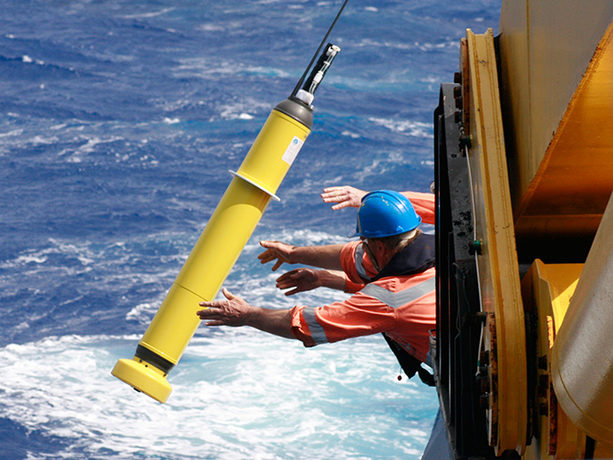Despite being from Vancouver Island I never gained a research interest for the marine sciences, so I didn’t understand 100% of this presentation, but it was still interesting.
Dr Hamme and her team used a combination of ship-based measurements and measurements from floating measurement devices, called Argo floats, to assess the amount of dissolved oxygen in different ocean layers. An Argo float is a battery powered autonomous units that measure dissolved oxygen concentration, as well as nitrate concentration, chlorophyll concentration and pH, in ocean water. The unit can modify its density to travel along the water column and take measurements at different depths. There are just under 4000 Argo floats in the ocean right now and the Canadian government has just announced 5.6 million dollars will be put towards expanding the fleet. Argo floats allow oceanographers to take measurements in many locations year-round, something that isn’t feasible with ship-based measurements. Unfortunately, Argo floats cannot measure argon concentration which makes it difficult to determine what variability in oxygen concentration is due to physical vs biological processes. Argon has many of the same physical properties as oxygen and measuring argon alongside oxygen allows researchers to estimate how much oxygen flux is due to physical properties such as temperature and how much is due to biological processes like photosynthesis. Data from ship-based measurements can be used to apply a correction to Argo data, but a more robust way of accounting for physical properties needs to be developed.
Oxygen concentration is typically highest at the surface due to photosynthesis and gas exchange with the atmosphere and lowest in the deep ocean due to respiration and a lack of light and gas exchange. A combination of Argo measurements and ship-based measurement can be used to assess seasonal, and geographical variation in oxygen levels.
My oceanography background is extremely limited, so I had some difficulty following this presentation. I would have liked it if Dr. Hamme had explained what the measurements meant and provided a little more background, but I understand the difficulty of presenting a lot of information in a restricted time period.
Beyond a connection to anthropogenic effects, I can’t really think of any way to connect this to my research. Dr Hamme did a good job answering the audience’s questions, but my lack of knowledge on the subject makes it difficult to come up with a question that hasn’t already been answered.


Recent Comments